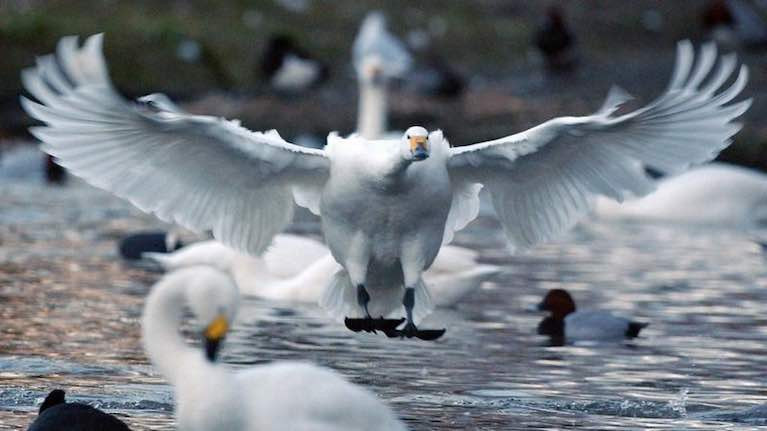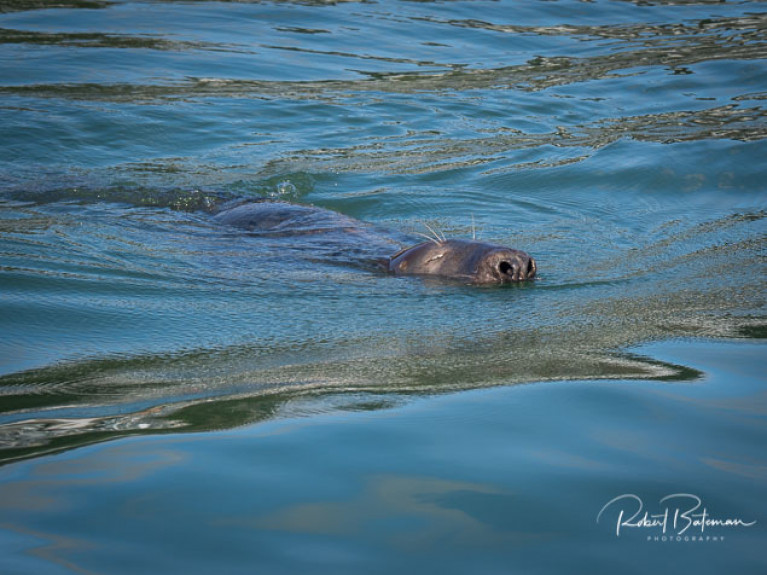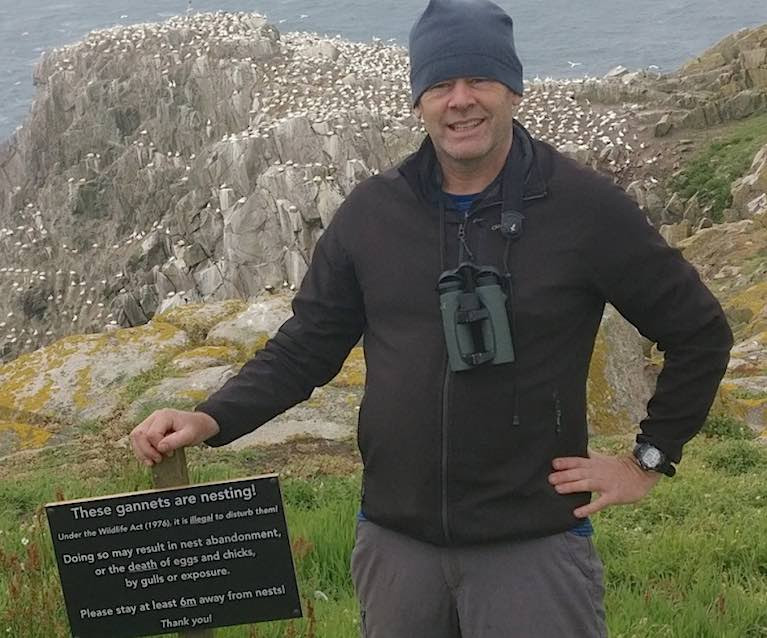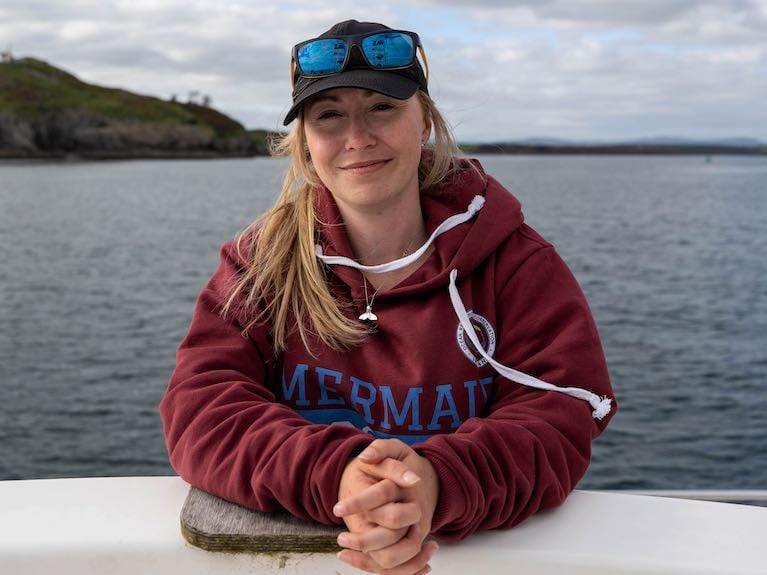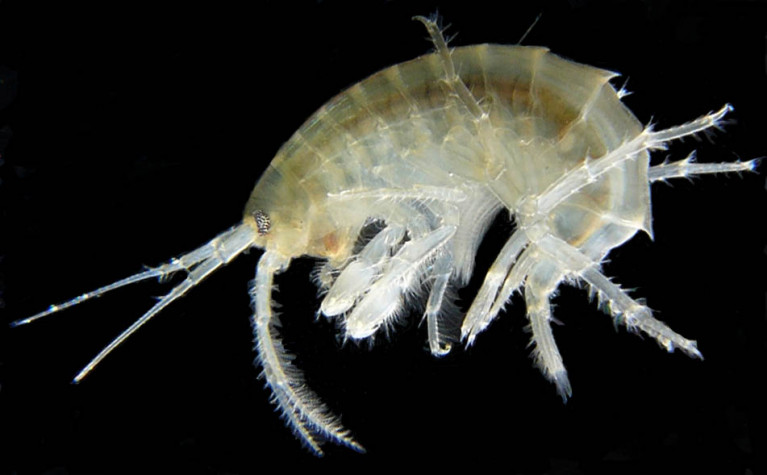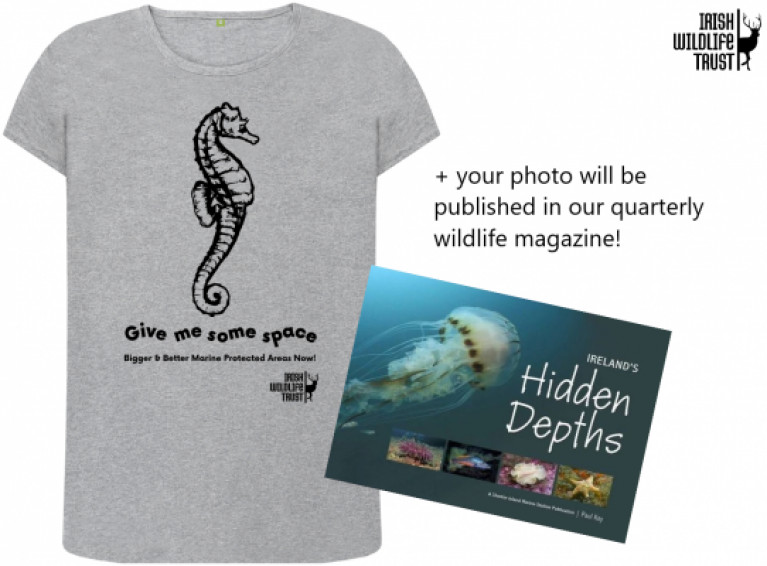Displaying items by tag: marine wildlife
Dead Swan on Lough Beg Found to Have Bird Flu
The BBC has reported that a wild swan found dead earlier this week at Lough Beg near Toomebridge, a small village on the North West corner of Lough Neagh has tested positive for Bird Flu. Lough Beg is a small freshwater lake on the border between County Londonderry and County Antrim.
The Lower River Bann flows into it from Lough Neagh at the southern end and continues its route to the sea from the northern end. It has been designated a Ramsar Site which is a wetland site designated to be of international importance under the Ramsar Convention.
Preliminary results confirmed that the swan had a similar strain of the disease to that found in poultry flocks and wild birds in Britain. Public health officials have advised that the risk to public health from this strain of avian influenza is very low, as is the threat to food safety. A dead falcon found in County Limerick also tested positive in recent days.
The chief vet Dr Robert Huey urged poultry keepers to tighten their biosecurity measures to stop transmission to commercial flocks.
The swan was found by environmentalist Chris Murphy who was assessing the impact of A6 roadworks on overwintering birds at the lough - an internationally important protected site. Further tests will now be carried out to establish whether the disease is a highly pathogenic strain or one which is less virulent.
On Wednesday a bird flu prevention zone was declared across Britain after the discovery of the disease there. Where it is detected in poultry flocks, the birds are destroyed, and prevention zones are established around affected premises. It can also lead to restrictions on trade.
Northern Ireland's Chief Vet Robert Huey urged anyone with poultry to tighten their biosecurity to prevent interaction between wild birds and their flocks.
Trying to Get to the Truth About Shooting Seals
One of the most difficult, controversial and upsetting marine environment stories I have reported in my time as a marine correspondent concerns seals. I've seen them rehabilitated by a sanctuary and marvelled at the work put into healing injured, sick seals and releasing them back into the sea. I've seen fishermen provide fish to feed those seals being rehabilitated.
I've also heard fishermen claim, in anger and fury, that their catches were taken from their nets, partially eaten and then discarded useless by seals.
I've seen injured seals and heard allegations by animal welfare groups and environmentalists that fishermen had taken the law into their own hands against protected species.
Under the Wildlife Acts 1976 to 2018, cetaceans and seals are protected species.
 Seals are a protected species Photo: Bob Bateman
Seals are a protected species Photo: Bob Bateman
Dáil debate
In recent weeks the whole issue has come to the fore again, after a Dáil debate when national media reported that licences could be given to fishermen for a cull to shoot seals. There was another outburst of fury, particularly on social media. But what is the truth of this issue?
Inland Fisheries Ireland
Official records show that the State agency responsible for the conservation, protection and management of Ireland's inland fisheries and sea angling applied three times for licences to shoot seals. A spokesperson for Inland Fisheries Ireland confirmed that it had applied for Section 42 authorisations from the National Parks and Wildlife Service on three occasions in the last 10 years. No application has been made this year. "One seal has been removed under a Section 42 authorisation in the last 10 years for reasons of public safety," the IFI said.
National Inshore Fishermen's Association
The National Inshore Fishermen's Association said there had been "biased reporting by mainstream media" which never interviewed anyone from the inshore fisheries sector. "If you take the time to listen and consider fishermen's complaints, you'll understand there are two separate aspects. The first is the amount of fish seals eat and the impact it has on fish stocks. The second is the economic impact seals have on fishers' livelihoods."
So, for this week's podcast, I spoke to the Secretary of the Inshore Fishermen's Association, Alex Crowley.
Listen to the Podcast here
Covid Restrictions Protecting Saltee Gannets
COVID-19’s impact on visits to offshore islands may be benefiting the gannet seabird colony on Wexford’s Great Saltee.
A new University College Cork (UCC) study has recorded the level of disturbance to the birds caused by tourists in the summer of 2017.
Great Saltee does not have a warden, and many tourists unwittingly cause a disturbance, leading to parents leaving their nests temporarily, exposing them to predators who quickly seize the opportunity and steal the gannets’ one and only egg, the report says.
 Gannet colony on the Great Saltee Islands off the County Wexford coast
Gannet colony on the Great Saltee Islands off the County Wexford coast
Many tourists, especially those looking for that perfect photograph of birds on their nests, got too close to the gannets, often to within less than one metre.
This led to a 60% reduction in breeding success compared with birds at undisturbed parts of the colony, according to Debs Allbrook, a UCC masters in science student.
“On one occasion we saw nine disturbance events over a two-hour period. This directly led to eggs from nine gannet nests being stolen by herring gulls, who seem to have learned to watch the interactions between tourists and people,” she said,
“ One photographer ran right through the colony trying to retrieve his camera lens rolling downhill, leading to disturbance of about 30 nests,” she said.
As part of her research, Debs Allbrook tested to see if tourists would pay attention to an information sign warning them that their actions could be damaging.
The sign said: “These birds are breeding. Under the Wildlife Act (1976) it is illegal to disturb nesting birds. Please do not approach the colony as doing so may result in the abandonment of eggs or the death of chicks. Thank you for your consideration.”
The vast majority of people paid attention to the sign. People stayed away from the birds and fewer disturbance events were observed.
“This showed that it was largely lack of knowledge that led to the disturbance in the first place. People did not understand the harm they were causing,” she noted.
“The disturbance often caused confusion in the colony and it only took a second for a gull to zip in and steal an egg,” she said.
The full publication can be accessed now online here
Strangford Lough is world-famous as the main arrival site for most of the migrating Canadian population (up to 80%) of pale-bellied Brent geese. Every autumn thousands of these birds leave their breeding grounds in eastern Canada and travel to Ireland to spend the winter. They leave Canada in late summer, travelling across Greenland, stopping off briefly in Iceland for a quick refuel before arriving in Ireland where they overwinter. Like their ancestors before them, most will arrive on the mudflats of Strangford to refuel on the nutritious eelgrass that grows in the intertidal sand and mudflats, although they will graze in the fields neighbouring the shore.
To protect these overwintering birds who arrive with their young, tired and hungry and in need of rest and food, the Strangford and Lecale Partnership has erected 'Share the Shore' panels in several sites around the Lough and at Killough Bay, (about 8km south-west of Downpatrick, on the County Down coast).
 'Share the Shore' panels are located in several sites around the Lough and at Killough Bay
'Share the Shore' panels are located in several sites around the Lough and at Killough Bay
The Share the Shore project out of a study in 2015/16 where the effects of dog walking on the bird population in Strangford Lough was monitored on a particular site – Greyabbey Bay on the east shore. From this study, it was concluded that a disturbance event affecting over-wintering birds occurs approximately once every hour. The data showed that most of this disruption is caused by dogs being walked off the lead and that excluding unknown and natural causes, off lead dogs cause the most severe response from the birds.
The birds have a small window to feed on the shore - as the tide goes out. Every time they are forced to take flight, they expend a great deal of energy and lose valuable feeding time. The panels give advice on dog walking to allow the birds to feed undisturbed.
 The panels give advice on dog walking to allow the birds to feed undisturbed
The panels give advice on dog walking to allow the birds to feed undisturbed
The six panels are located in Kircubbin, Cunningburn and the Floodgates on the east side; at Island Hill and Whiterock on the western shore and at Killough on the coast.
The message is " Please take the time to consider the advice on these panels and always keep your dog on a lead!".
The Strangford and Lecale Partnership's aim is to conserve the magnificent natural and built heritage for future generations. They work with, and for, local people to achieve prosperity and social well-being, particularly through heritage, tourism, and sustainable outdoor recreation.
What Impact of Marine Traffic on Whales in Irish Waters? New Study Launched
The waters off the south coast of Ireland have been selected as the study location for Ireland’s first real-time acoustic monitoring project of large whales, with the aim to relay warning alerts to maritime traffic to reduce the risk of disturbance and ship strikes.
The Automated Cetacean Acoustics Project (ACAP) is being undertaken by Ocean Research & Conservation Ireland, a “for-impact” non-profit organisation based in Cork, in partnership with the Rainforest Connection and supported by Huawei Ireland.
Huawei Ireland is providing a research grant with technological support through its global TECH4ALL initiative. TECH4ALL is Huawei’s digital inclusion initiative, using technology, applications and skills to empower people and organisations everywhere.
90% of Ireland’s international trade travels by sea, with the South Coast of Ireland one of the busiest heavy ship shipping lanes in the world. Thousands of large container ships pass through it from Eastern Canada to Liverpool and other European ports annually, as well as additional pleasure boats, speed crafts and eco-tour operators.
The South Coast is also an important foraging, resting and reproductive habitat for 25 cetacean species (whales, dolphins and porpoise) and particularly for large Humpback, Fin and Minke whales. Heavy ship traffic places whales at an increased risk of ship strikes causing injury or even death, and also raises the ambient noise pollution affecting all the species present.
The new study will see the deployment of acoustic monitoring equipment in the Celtic Sea at locations where sightings of whales and other wildlife have been recorded. The equipment will be able to listen for movements of whales, and with the help of machine learning models to enhance data analysis, for the first time provide near real-time detection. This will provide multiple benefits - helping with the identifying and classification of species in Irish waters, their distribution and behaviour, and most importantly, the development of an early warning system that will enable ships to reduce their speed in time to lessen the considerable risk of ship strikes.
The project will see Ireland leading the way in the advancement of policy and programmes that respect and protect marine wildlife informed by near real-time data available for the first time, with the help of Rainforest Connection and Huawei Ireland. Not only will the detections be able to help inform policy and decision-makers in the establishment and management of potential marine protected areas (MPA’s), they will also be used for education and made available to the wider public to hear the symphony of cetacean sounds.
Commenting, lead researcher Emer Keaveney, Marine Mammal Ecologist, Ocean Research & Conservation Ireland said: “Recent advances in technology provide increasing opportunity to use these innovations for good and to enhance our understanding of the natural world. This is such an exciting time as now we have a chance to peer inside the secret world of whales in Irish waters, and directly improve their welfare and conservation”.
“We are a voluntary organisation that relies heavily on third party and private assistance, so we are delighted to have this opportunity to work with Huawei Ireland.”
Emer Keaveney will discuss the project via livestream as part of the annual Huawei Connect summit, which takes place in Shanghai and online between 23rd - 26th September. Emer Keaveney is the only Irish speaker at the summit, which focuses on AI, 5G and digital innovation.
Commenting on the announcement, Tony Yangxu, CEO Huawei Ireland said: “Huawei has been a trusted partner for over 16 years in Ireland, and we are excited to be supporting Ocean Conservation & Research Ireland as our very first fully funded TECH4ALL initiative in Ireland.”
“Huawei believes that no one should be left behind in the digital world and we have made it our mission to put digital inclusion front and centre of our business. Our TECH4ALL programme centers on developing digital inclusion and empowerment initiatives with measureable outcomes. One of its many purposes is to help accelerate the UN’s SDGs and we hope that this project with ORC Ireland can contribute to that.”
Are Unexpected Changes in Bird Species Migration to Clare Island a Result of Global Warming?
110 years ago Robert Lloyd Praeger brought a group of eminent European scientists to Clare Island to map the flora, fauna, geology and archaeology of the small, exposed Atlantic island off the coast of Mayo. The Royal Irish Academy’s New Survey of Clare Island, a unique multidisciplinary endeavour that together with Praeger’s first Clare Island Survey provides an invaluable body of research informing future conservation of the natural and built heritage of Ireland and Europe.
In a new book, New Survey of Clare Island. Volume 9: Birds, published on Monday, 17 August to celebrate Heritage Week 2020, the editor Tom Kelly traces the story of the birds from Clare Island.
One of the most dramatic changes has been the arrival on Clare Island of the formidable and spectacular seabird the Great Skua—or Bonxie—which now breeds further south in Ireland than it does in Great Britain. This unexpected change—a species moving south rather than vice versa—at a time of global warming remains to be explained.
 A Great Skua Photo: Richard T. Mills
A Great Skua Photo: Richard T. Mills
Clare Island became separated from Ireland about 8,000 years ago by rising sea levels brought about by the melting of the massive ice sheets that formed during the last Ice Age. Although this dramatic event would have had a minimal impact on the birds that made the island their home.
The Lapland bunting and the snow bunting probably arrived first, followed by more sedentary species including the rock ptarmigan and gyrfalcon as well as many wildfowl and wading bird species.
In the three millennia that followed the formation of Clare Island, mature woodland developed allowing a woodland bird community to develop.
 The Clare Island survey
The Clare Island survey
Neolithic man arrived about 4,000yBP (years Before Present). Over the succeeding 3,500 years or so, the woodland element was gradually removed and about 400 years ago the modern agricultural landscape was established. The woodland bird community on Clare Island has become mostly extinct probably because its habitat gradually disappeared over the millennia, In addition, the famines of the early to mid-nineteenth century had an impact on the ecology of the inhabited offshore islands. The abandonment of land as a result of famine, and the peoples who occupied that land, is well known to cause the departure of synanthropic bird species.
Nevertheless, agricultural activity and the expansion of grasslands created opportunities for seed-eating species and ground-nesting forms such as the skylark and meadow pipit and migrants such as the northern wheatear and corncrake, and the extraction of peat created opportunities for wetland species. Well-known species such as the house sparrow, European robin, song thrush and perhaps the barn swallow have colonised the island.
Oceans given human-induced change, writes GreenNews.ie, may have been affected as much as half of the Atlantic, Pacific and Indian Oceans, a new study has revealed.
A new article in Nature Climate Change predicted through climate modelling that 20 to 55 per cent of the Atlantic, Pacific and Indian basins would have an “emergent anthropogenic signal” in 2020 and that figure would climb to between 40 and 65 per cent by the middle of this century.
The current model projects that the percentage will fall between 55 and 80 per cent in 2080.
Oceanic change (Atlantic see: BBC News) as a result of the climate crisis affects both temperature and salinity, which results in “widespread and irreversible impacts”, according to the authors of the study.
While the most pronounced change is found in the upper ocean, research has indicated that changes in water masses at depth have been identified and “will probably strengthen in the future”, they added.
The first indications of global ocean heat content change was identified in the early 2000s and studies have continued to investigate trends ever since.
Anthropogenic change remains undetected in “vast regions of the World Ocean”, according to the study, but the authors note that the lack of recorded change could be due to poor observational coverage.
Further maintenance and augmentation of an ocean observing system capable of detecting and monitoring persistent anthropogenic changes therefore is needed in order to monitor the ocean, the study concluded.
For more on the effects of a changing ocean click here and scroll down.
Small freshwater animals are breaking down microplastics into nanoplastic fragments which can enter the food chain, according to new research by University College Cork (UCC).
In less than four days, the freshwater amphipod, Gammarus duebeni, is able to fragment microplastics into different shapes and sizes, including nanoplastics, the research has found.
These invertebrate animals inhabit Irish streams and are part of a larger group found around the world in freshwater and ocean environments.
Microplastics are plastic pieces smaller than 5 mm, and nanoplastics created by the crustaceans within hours are at least five thousand times smaller in size.
Breakdown of plastics had been thought to occur mainly through very slow processes in the marine environment such as sunlight or wave action.
The findings have “ substantial consequences for the understanding of the environmental fate of microplastics”, study leader Dr Alicia Mateos-Cárdenas, of UCC’s School of BEES and Environmental Research Institute says:
The study also has consequences in terms of the impacts of plastics, she said.
While microplastics can become stuck in the gut of seabirds and fish, current understanding suggests that the smaller nanoplastic particles could penetrate cells and tissues where their effects could be much harder to predict, she noted.
“These invertebrates are very important in ecosystems because they are prey for fish and birds, hence any nanoplastic fragments that they produce may be entering food chains” Dr Mateos-Cárdenas added, urging further “urgently needed” research.
The study was funded by the Environmental Protection Agency, and published in the journal Scientific Reports this week, here
Photographers of Ireland’s rich marine environment are invited to enter images for a contest being run by the Irish Wildlife Trust.
To mark both World Oceans Day this month and easing of travel restrictions to within county boundaries, the trust is inviting submissions of images from the public.
Underwater photographs are “particularly welcomed” while coastal images celebrating Ireland’s marine wildlife are also accepted, it says.
The trust says that if entrants know their photo was taken within a marine protected area, this should be made clear. It has published a map of the protected areas which were designated under EU legislation.
"Marine protected areas are the best tool we have to protect and restore precious natural habitats for future generations, so we really want to highlight the beautiful ecosystems they protect,”IWT project officer Regina Classen says.
The trust says the winner will be chosen by the public through a voting system on the IWT website from July 1st until July 7th.
The photograph with the most ‘likes’ will be announced on July 8th and sent a marine themed t-shirtand a copy of ‘Ireland’s Hidden Depths’ by Paul Kay. The winner’s photograph will also be published in the IWT quarterly wildlife magazine.
Full instructions on how to participate can be found here and this map shows the location of marine protected areas.
Dingle Dolphin Concerns are a Reminder that Baltimore Pioneered the Special Dolphin Concept
There’s concern in West Kerry and worldwide among his fans and friends that Fungie the Dingle Dolphin is becoming depressed. He is being made gloomy by the lack of company and an audience for his usual summer season starring role, which would be playing to empty houses were he to put it on under the current Lockdown. Thus the word is that Dingle is organising a rota of boats to keep him company from time to time, but whether that will be remotely as good as the usual capacity crowd he gets in high summer remains to be seen.
Whale and dolphin specialists may sniffily tell us that it’s completely unnatural and maybe unhealthy for a lone bottlenose dolphin like Fungie to develop such a special relationship with a waterborne enraptured audiences of adoring fans. But if you’ve ever been in the midst of the milling fleet of boats as it wheels frenetically around Fungie as he goes through his many routines, you’ll realise that here is one very intelligent rockstar putting on a life-enhancing performance, and the fact that he has been joyously doing it since 1983 suggests that ill-health – whether physical or mental – had not been on the agenda until the current freakish situation.
In terms of rockstar/audience interaction, it certainly beats the experience being at Electric Picnic or Slane Castle on a damp midge-ridden evening every time. Our own best experience of it came after the Dun Laoghaire to Dingle race way back in 1995, when we joined the gathering fleet in the afternoon sunshine out in the harbour mouth, and suddenly he was among us. Fungie was leaping and pirouetting with such style and speed and enthusiasm that we’re convinced he went straight over our 35-footer between the mast and the backstay, because we certainly were very close indeed to the godlike presence.
 Well hello there…….close encounters with Fungie are never forgotten. Photo Dingle Dolphin
Well hello there…….close encounters with Fungie are never forgotten. Photo Dingle Dolphin
In the heightened mood, people become semi-demented, and one of our crew – he had better remain nameless – jumped in with the group already in the water trying to share the Fuungie experience to the uttermost. Some greater power seems to protect it all, because so far as is known, none of the head-cases who jump in has yet been struck by the flailing propellors of the heaving fleet.
So if there is one special early exemption from lockdown, it should be made for the Fungie experience in Dingle. He has taught us a lot, so much so that the very idea of eating whalemeat now seems like cannibalism, while it has been shown that the bonds that form from special relationships between dolphins and humans are not to be trifled with.
Twenty years or so ago, a “scientific” international research group formed an intimate bond with a dolphin, and when the experiment was over they simply went away and left him on his own in the sea. Becoming terminally depressed after the ending of the fun they’d had, he took his own life by descending to the seabed and not coming up for air.
That now seems an absolute disgrace caused by contemptible thoughtlessness, and the fact that we see it as such is heightened by our awareness of Fungie. This responsiveness to the sensitivities and fascination of special sea creatures is relatively new, for it’s now generally forgotten that very many years ago, Baltimore in West Cork was home to a semi-resident dolphin or pilot whale known as Albert.
This would have been in the 1920s to 1940s period, and Albert aroused mixed feelings. He would escort boats in and out through the harbour mouth, and when a visiting cruising boat had anchored off the village, he would occasionally rub up against the hull, supposedly to clear himself of sea lice, though his intentions were equally likely to have been amorous.
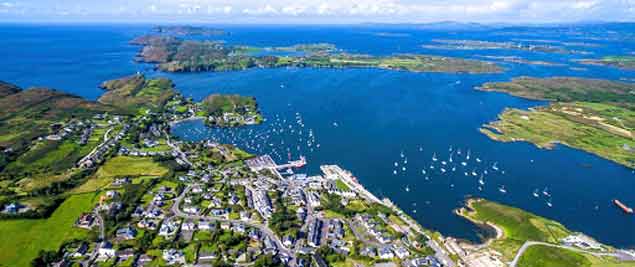 High summer in Baltimore, West Cork. Nearly a hundred years ago, Baltimore’s resident dolphin or pilot whale - known as Albert - was rumoured to have moved anchored cruising boats from their carefully selected location off the village (foreground) all the way across the harbour to Sherkin Island during the night. Photo: Tom Vaughan
High summer in Baltimore, West Cork. Nearly a hundred years ago, Baltimore’s resident dolphin or pilot whale - known as Albert - was rumoured to have moved anchored cruising boats from their carefully selected location off the village (foreground) all the way across the harbour to Sherkin Island during the night. Photo: Tom Vaughan
Another of his tricks was to trip the anchor of carefully-anchored boats. Nowadays when it only needs a quick jab of astern with the auxiliary engine to dig the anchor in again, that wouldn’t be too much of a hassle. But in the old days when many craft were engine-less, it was a real pain to have to stick up some sail to make some way astern.
However, that was as nothing compared to the experience of at least two visiting crews, who went to sleep with their boats anchored serenely close in off Baltimore and woke in the morning to find themselves anchored over at Sherkin. Albert had taken it upon himself to move them quietly across Baltimore Harbour.
Nowadays people would be queuing up and paying good money for the extraordinary experience of having their boat moved almost a mile during the night by a friendly hyper-clever big dolphin. But back in the ancient times, visitors to Baltimore were earnestly warned of the hazards posed by Albert, he was looked on as very much of a mixed blessing, and most certainly not as a very special visitor attraction.



























